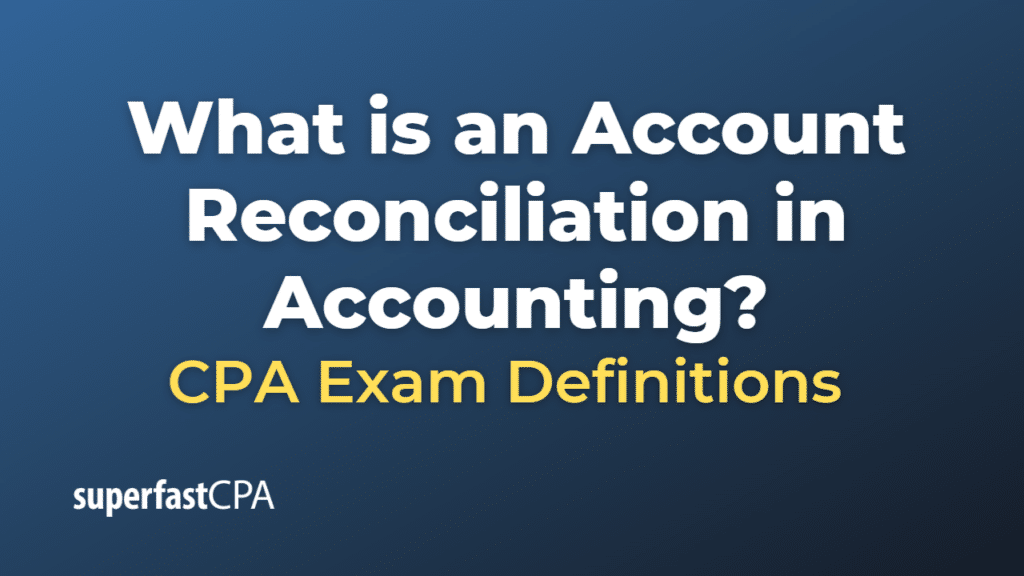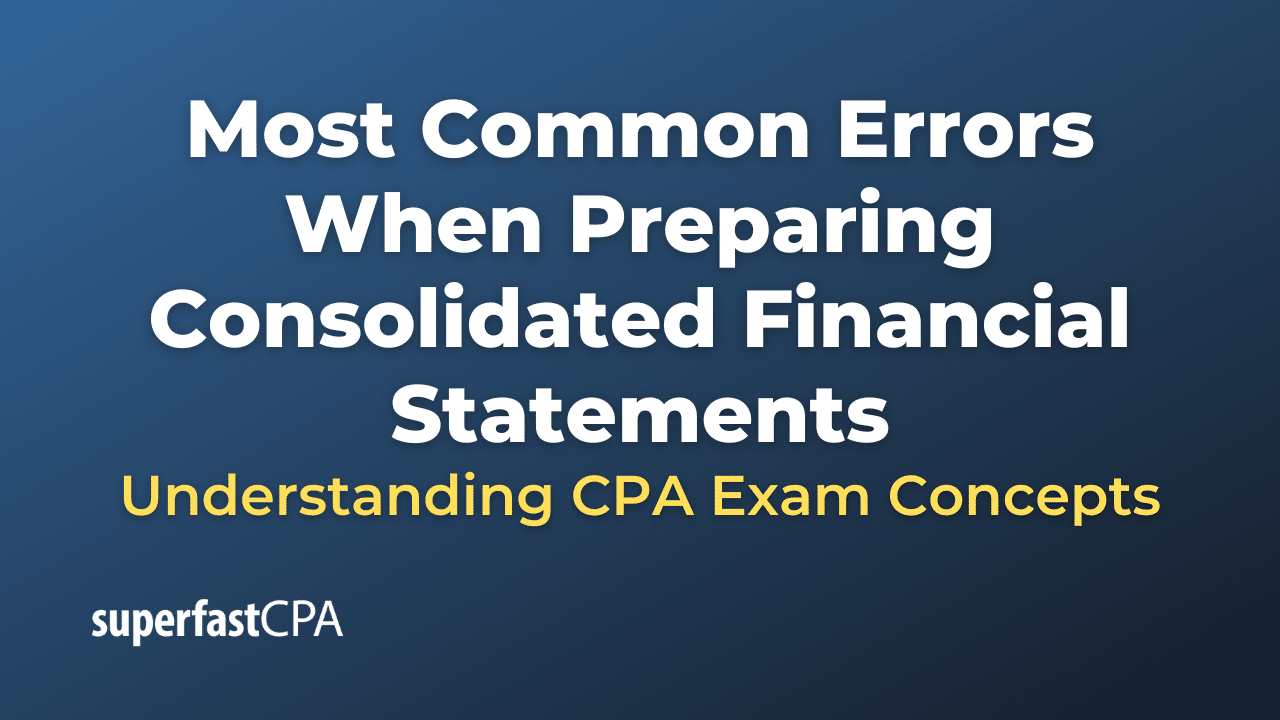Account Reconciliation in Accounting
Account reconciliation in accounting is the process of comparing and verifying an account’s balance in a company’s general ledger with external records or supporting documentation to ensure accuracy and completeness. The purpose of account reconciliation is to identify and correct any discrepancies, errors, or inconsistencies in the financial records and to maintain the reliability and accuracy of the company’s financial statements.
Account reconciliation is an essential component of internal control, financial management, and audit procedures. It is typically performed periodically, such as monthly, quarterly, or annually, depending on the nature and materiality of the account.
Common types of account reconciliations include:
- Bank reconciliation: This involves comparing the cash account balance in the general ledger with the bank statement balance. Any differences, such as outstanding checks, deposits in transit, or bank errors, are identified and adjustments are made to the cash account accordingly.
- Accounts receivable reconciliation: This involves comparing the accounts receivable balance in the general ledger with the detailed list of outstanding invoices and customer balances. Any discrepancies, such as unrecorded payments, duplicate invoices, or incorrect customer balances, are identified and corrected.
- Accounts payable reconciliation: This involves comparing the accounts payable balance in the general ledger with the detailed list of outstanding bills and vendor balances. Any discrepancies, such as unrecorded invoices, duplicate payments, or incorrect vendor balances, are identified and corrected.
- Inventory reconciliation: This involves comparing the inventory balance in the general ledger with the actual physical inventory count. Any discrepancies, such as damaged goods, theft, or errors in recording inventory transactions, are identified and adjustments are made to the inventory account.
- Fixed asset reconciliation: This involves comparing the fixed asset account balances, such as accumulated depreciation and cost, with the detailed fixed asset register. Any discrepancies, such as unrecorded disposals, incorrect depreciation calculations, or errors in recording asset acquisitions, are identified and corrected.
The account reconciliation process usually involves the following steps:
- Obtain the account balance from the general ledger and the corresponding external records or supporting documentation.
- Identify and investigate any discrepancies or inconsistencies between the two balances.
- Prepare and record any adjusting journal entries required to correct the account balance.
- Update the account balance in the general ledger to reflect the adjustments.
- Document the reconciliation process, including explanations for any discrepancies and adjustments made.
Regular account reconciliation helps maintain the accuracy and reliability of a company’s financial records, supports effective decision-making, and ensures compliance with external audit and regulatory requirements.
Example of an Account Reconciliation
Let’s go through an example of a bank reconciliation, which is a common type of account reconciliation in accounting.
Background: XYZ Corporation has a cash account balance of $10,000 in its general ledger as of March 31, 2023. XYZ Corporation’s bank statement for the same date shows a balance of $9,500. The accounting department needs to perform a bank reconciliation to identify the discrepancies and adjust the cash account balance accordingly.
Here are the steps for the bank reconciliation:
- Obtain the account balance from the general ledger and the bank statement balance:
- General ledger cash account balance: $10,000
- Bank statement balance: $9,500
- Identify and investigate discrepancies:
- Upon reviewing the bank statement, the accounting department identifies two outstanding checks totaling $700 that were issued by XYZ Corporation but have not yet cleared the bank.
- The accounting department also notices a deposit in transit of $200, which is a deposit made by XYZ Corporation that has not yet been credited to the bank account.
- Adjust the cash account balance:
- To reconcile the general ledger cash account balance with the bank statement balance, the accounting department needs to account for the outstanding checks and the deposit in transit.
- Adjusted general ledger cash account balance: $10,000 – $700 (outstanding checks) + $200 (deposit in transit) = $9,500
- Update the account balance in the general ledger:
- In this case, no adjusting journal entries are required, as the discrepancies (outstanding checks and deposit in transit) are timing differences that will resolve themselves when the checks clear the bank and the deposit is credited to the bank account.
- Document the reconciliation process:
- The accounting department prepares a bank reconciliation statement that documents the general ledger cash account balance, the bank statement balance, the identified discrepancies, and the adjusted cash account balance.
After completing the bank reconciliation, XYZ Corporation’s accounting department has confirmed that the adjusted cash account balance in the general ledger matches the bank statement balance, ensuring the accuracy of the company’s financial records.














